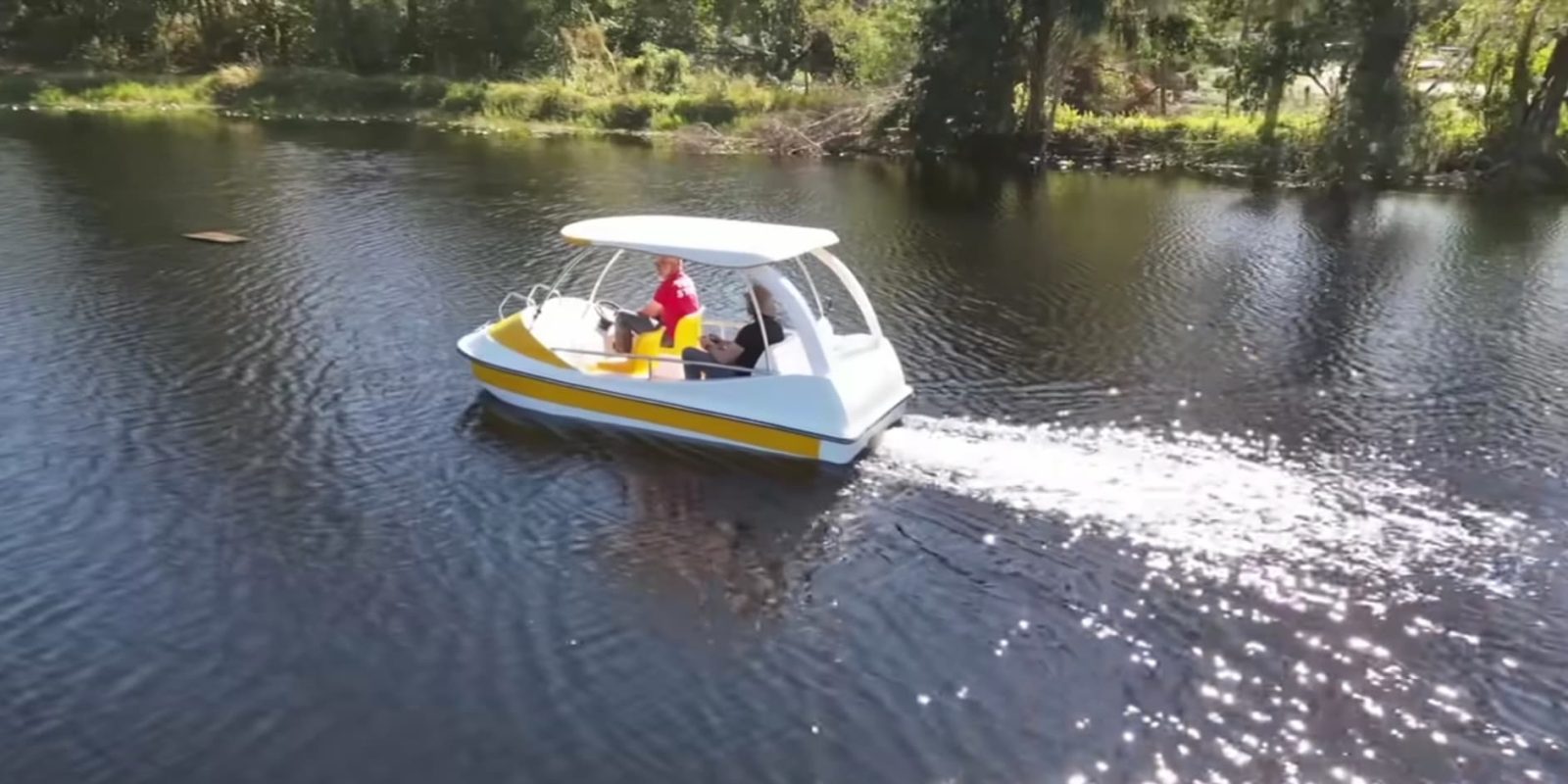
My common readers could keep in mind that two years in the past, I used to be profitable so onerous at life that I purchased myself a brand-spankin’ new boat as a deal with. Don’t get me mistaken, I’m nonetheless on an impartial journalist’s wage right here although, so after I say that I had “boat cash”, I imply I scraped collectively sufficient to purchase a $1,000 electrical boat instantly from China. It’s now been two years since that Alibaba supply, so let’s see the way it’s held up and what it appears like now.
As a little bit of a refresher first although, right here’s what I received on the time. Inside a surprisingly well-made metal body and plywood-lined crate (that most likely would have value $1k by itself to have made within the US), my five-seater fiberglass boat awaited me.
It was powered by a cute little 500W inboard motor with a belt and pulley drive connecting it to a rudimentary prop usual out of 1/8″ (3mm thick) metal plate bent and welded onto a piece of pipe.
The boat didn’t have batteries, so I added my very own pair of 12V 200Ah LiFePO4 batteries to create a 5 kWh battery pack that was doubtless means greater than I wanted.
You possibly can try my unboxing and testing video right here, which went viral with practically 4 million individuals having now joined me in the beginning of this loopy journey.

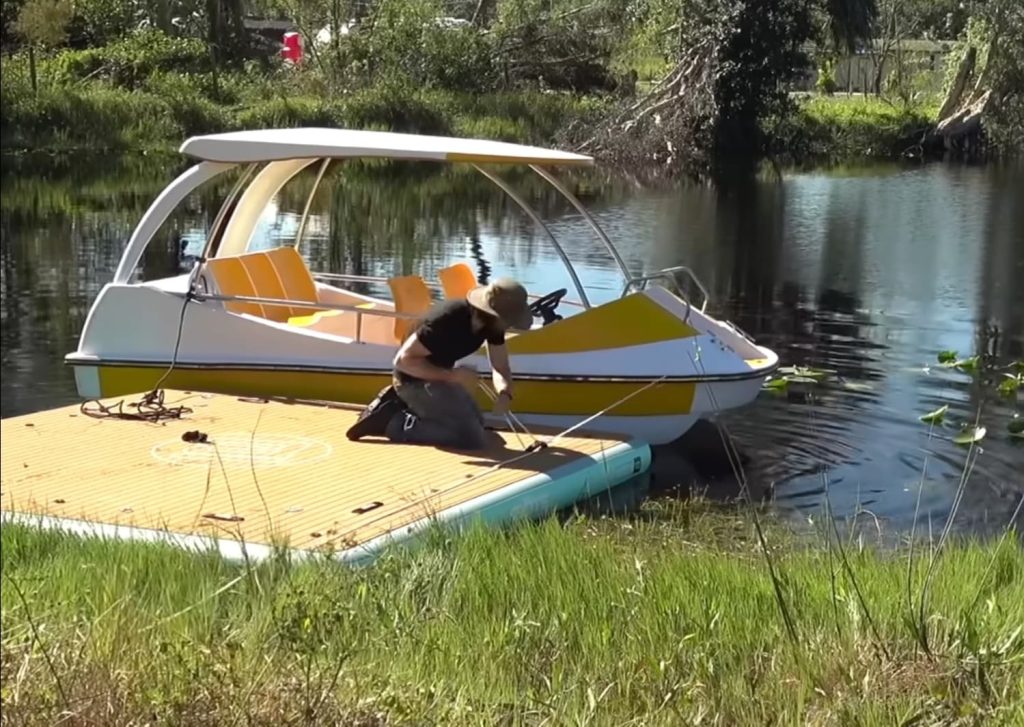
The boat appeared to work, in that it stayed above the waterline of our native lake and will transfer each fore and aft underneath its personal energy, fulfilling the foremost necessities of what it takes to be a motorboat.
Nevertheless, its efficiency left rather a lot to be desired. The prop was solely round 75% submerged, that means there was quite a lot of cavitation and wasted energy churning air by way of the water. Not solely did that make it inefficient, but additionally gradual.
It was onerous to journey over a single knot, although I did briefly hit 2 knots on my GPS speedometer app (and I’m counting that, even when I can’t ensure it wasn’t a fluke).
In different phrases, the boat was surprisingly first rate, but the efficiency was underwhelming.
For some time now, I’ve been chipping away at just a few upgrades to the boat every time I go to my mum or dad’s home, the place I preserve it. It’s been a nice little boat for my dad to take the grandkids out on and educate them about boating, nevertheless it has been due for some deferred love, upkeep, and upgrades.
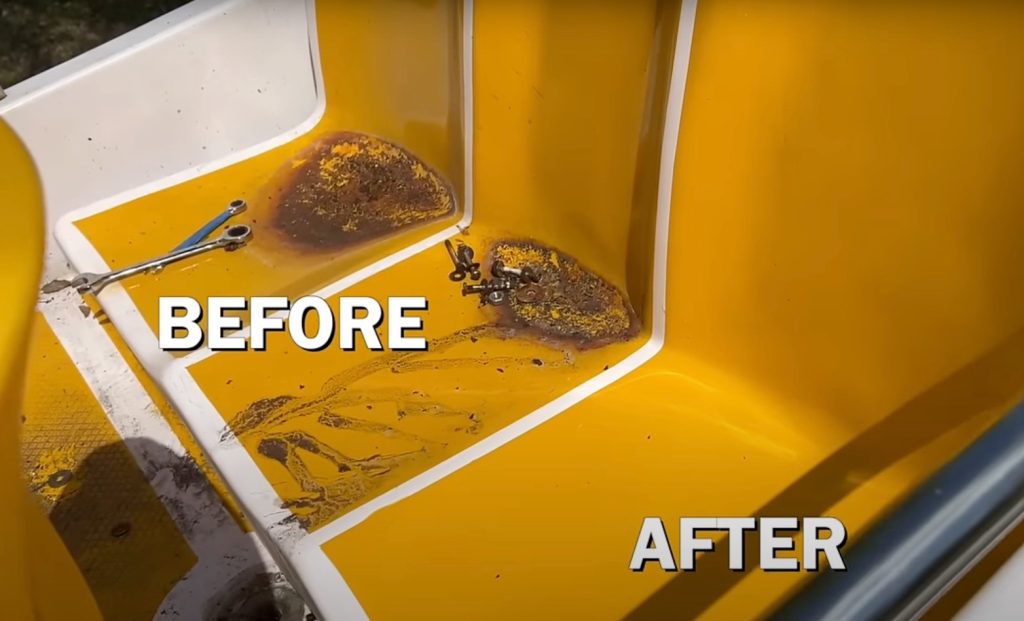

To begin with, right here’s the way it has aged. With out common cleansing, there was some critical marine grime build up, however the fiberglass has really held up surprisingly effectively in two years of harsh Florida solar and UV.
After two years, the chrome railings had a good quantity of corrosion and what appeared like pitting, although it just about all buffed proper out after I disassembled the cover to wash all the pieces rather well.
After buffing the shine again into the rails, I utilized a transparent coat in order that the rails will hopefully preserve their shimmer and I gained’t need to re-scrub the life again into them subsequent 12 months. The remainder of the boat’s hull and cover received a easy soapy scrub down.
As I put the cover again collectively, I lastly made a giant addition I’ve been planning ever since I received the boat: photo voltaic panels. I put a pair of 100W photo voltaic panels on the cover and wired them into an MPPT photo voltaic cost controller that feeds again into the batteries. The panels don’t cost fairly as shortly because the boat drains, nevertheless it has meant that I by no means want to tug the boat out to cost it anymore because it simply slowly expenses up all day whereas it’s floating round on the dock.
Photo voltaic panels on electrical boats are a recreation changer, particularly these used for just a few hours every week, equivalent to a Sunday cruise. You possibly can run your battery practically empty on the water in a day, then let it cost itself up over the following few days.
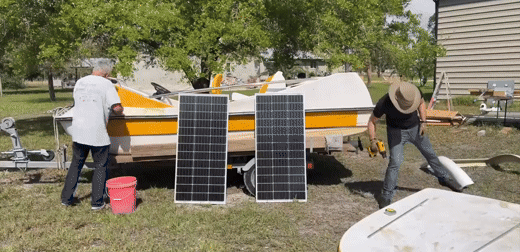

The following huge improve I’ve been planning is extra energy. To get there, I had a slick thought that will let me exchange the previous rudder and motor in a single fell swoop.
The rudder was horribly rusted out at this level, although amazingly that terribly inefficient propellor appeared practically nearly as good as new, so I think they really used stainless-steel to manufacture it.
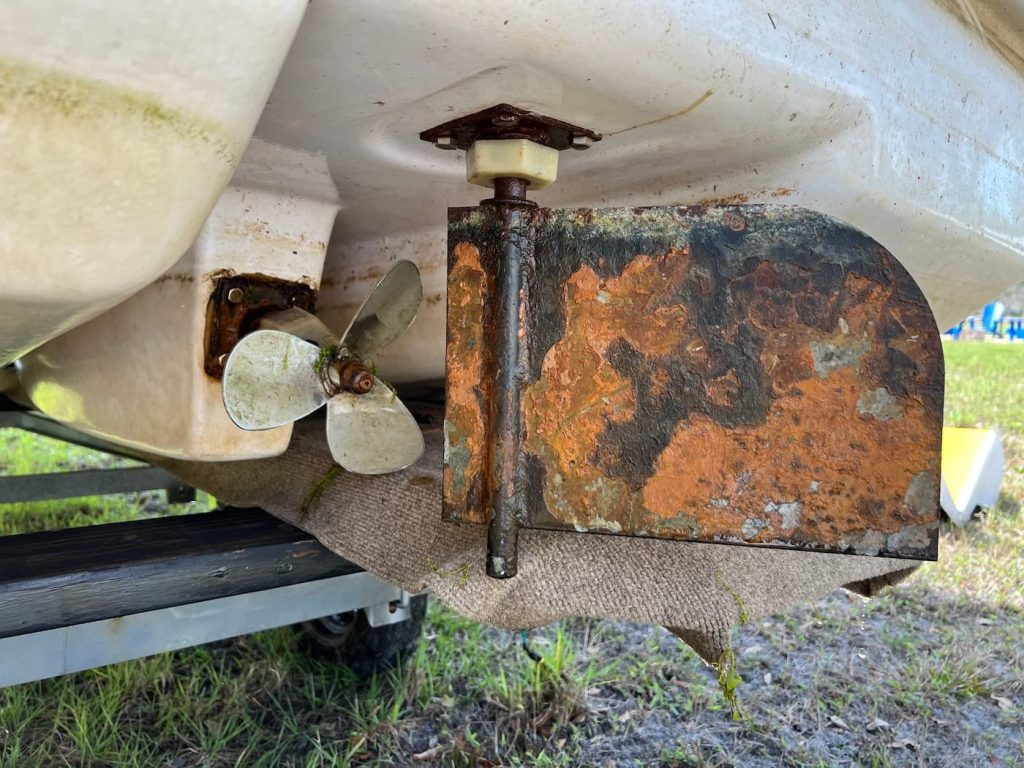
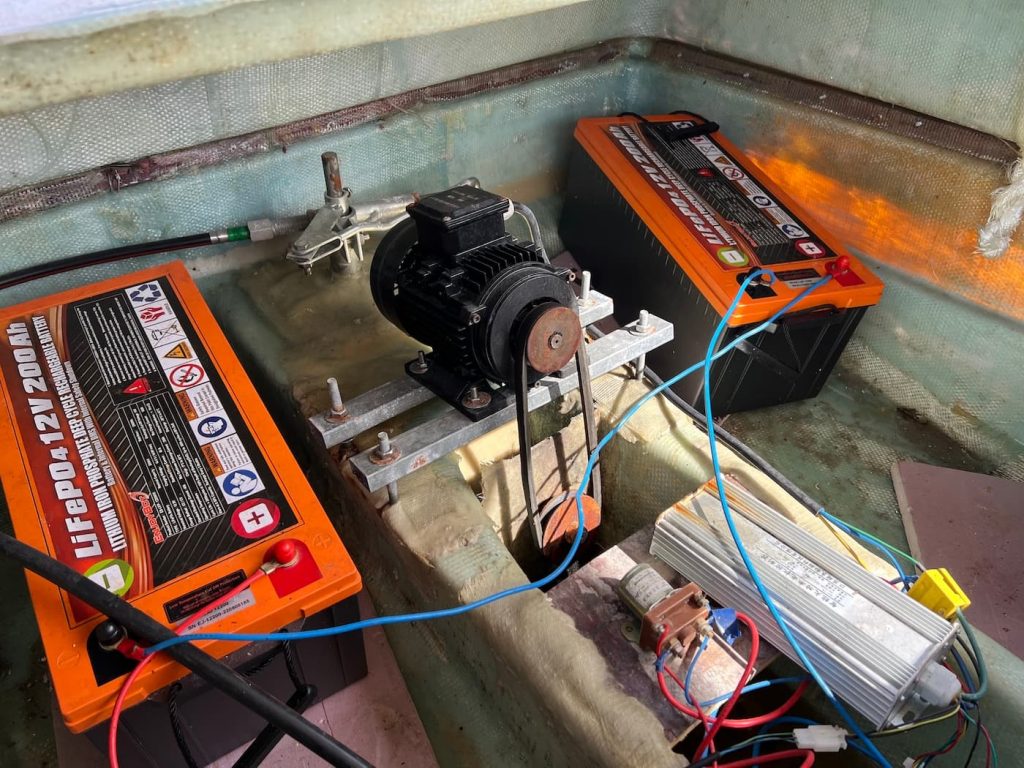
For the reason that design of the propellor shaft meant that its angle compelled the propellor to be too excessive, I made a decision to easily exchange that total system with an alternate. As a substitute of yanking out the propellor shaft and needing to seal the stuffing field, I left the prevailing seals in place and simply lower off the propellor. It ain’t fairly, nevertheless it’s under the waterline. It was additionally a uncommon case of the simplest resolution and the most secure resolution converging on the identical reply, because the shaft is already completely sealed in opposition to water ingress.
I discovered an 80 lb thrust Minn Kota trolling motor used on-line and snagged it for round $200 (it value over $1,400 new for this American-made motor). It has what Minn Kota refers to as an indestructible shaft, which I consider because it was onerous as hell to chop it all the way down to size utilizing a pipe cutter, which was essential to protect the wires that run down the shaft.
I eliminated the rudder and changed it with your complete trolling motor, now with its shortened shaft, and welded up some new linkage to attach it to the previous rudder controls. After yanking out the Minn Kota’s management board and wiring it into my batteries, I had a Frankenstein setup that I figured would give me far more energy and in addition some efficient thrust vectoring since I may management the course of the motor from the wheel, like an actual outboard.
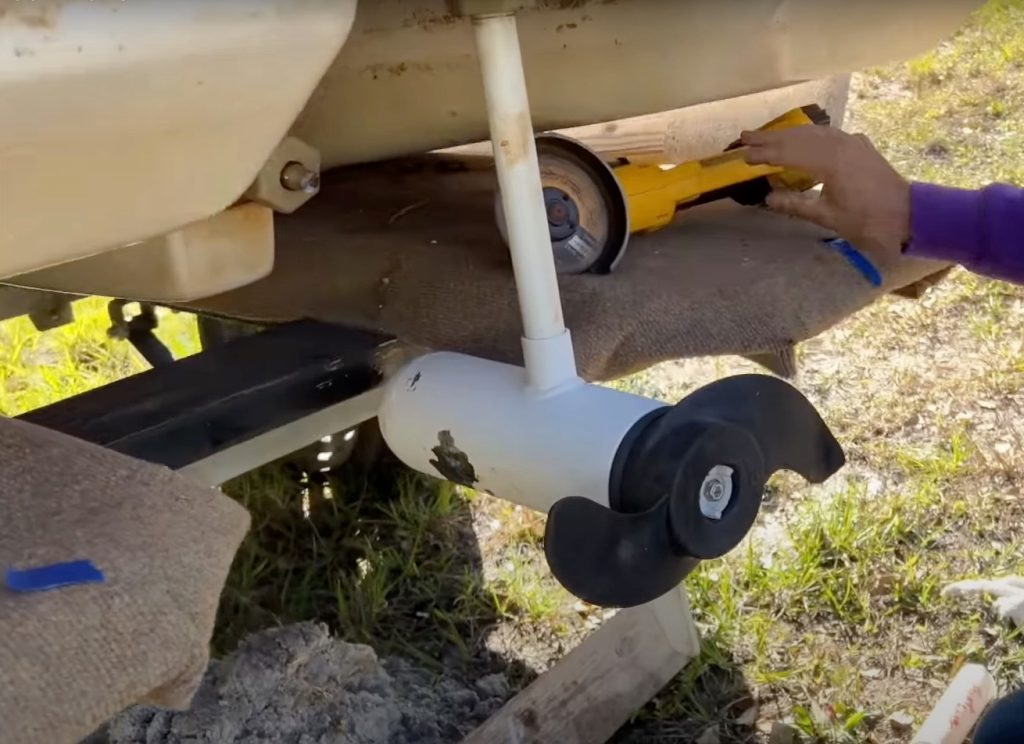

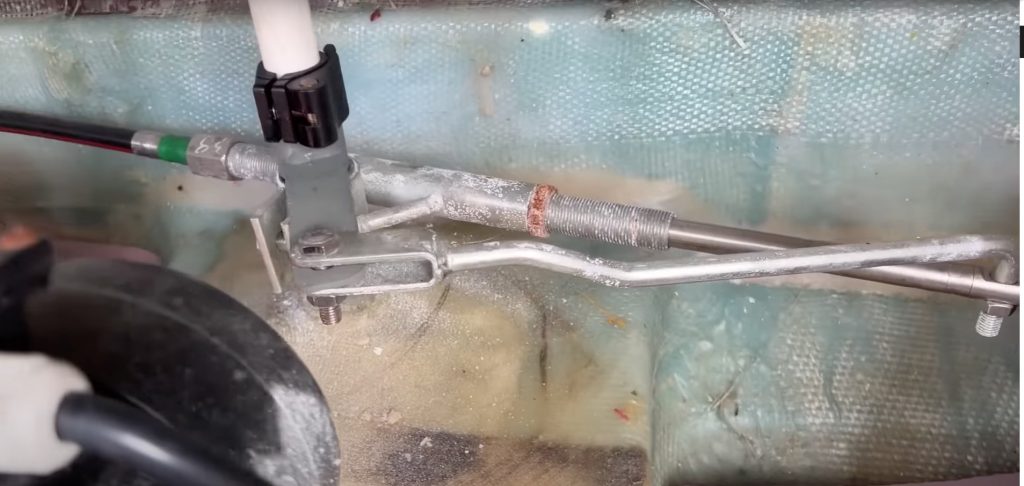
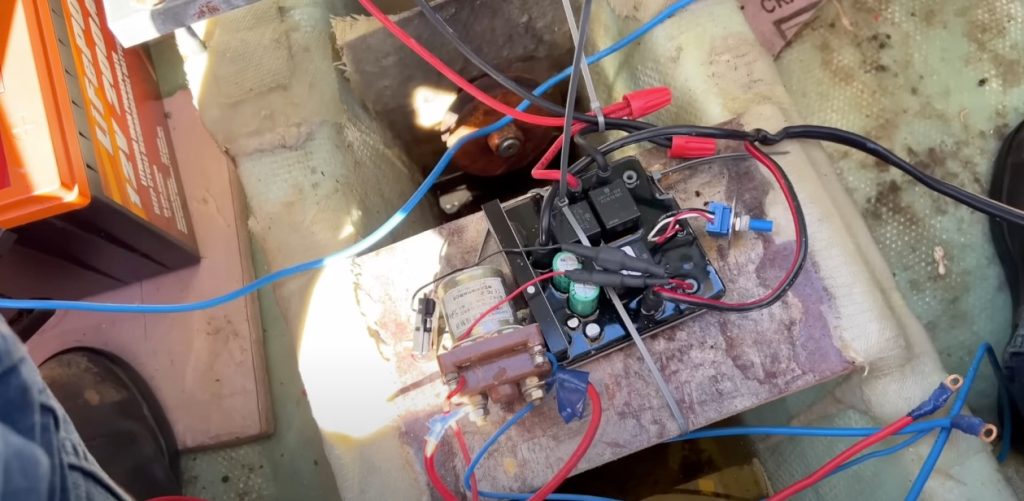
I hadn’t but run the wires as much as the helm, so the boat quickly required a crew of two after I put it again into the water. My dad took the wheel whereas I stayed within the ‘engine room’ within the again to manage the throttle.
It was instantly obvious how far more highly effective the boat was now, really leaving a wake. Sadly, it was additionally instantly obvious why boats have rudders, since this flat backside boat now had the worst case of oversteer I’ve ever seen.
With the highly effective thrust, the boat mainly shoved its ass-end in every single place with only a little bit of nudging. The cool factor was that it may actually flip in its personal size, although we have been mainly at all times turning till we may discover impartial on the wheel.
My dad described what we had finished as “like placing an outboard motor on a pie tin”, and I’ve to say that felt fairly correct. It made for some nice laughs (see the testing video right here, extremely beneficial!) however was barely controllable. It felt like a bumper automotive on water.

To repair it, I added a easy bolt-on rudder on the motor shaft. Placing the boat again in proved that there was extra management, nevertheless it nonetheless tends to oversteer a bit. Don’t get me mistaken, it’s enjoyable as hell, nevertheless it’s nonetheless doesn’t have the precision management I hoped for. Oh effectively, it’s ok for a $1,000 Chinese language boat with practically half as a lot added into it as a part of the upgrades!
Now, the boat is solar-powered, so it by no means wants charging, and the ability is a lot better to permit for some really enjoyable cruising at speeds of as much as roughly 5 knots. I don’t suppose we’ll be pulling a water skier anytime quickly, however we’re positively leaving a wake now.
The very last thing I have to do is add a pair of bilge pumps (it’s received two sponsons that create low factors on both aspect, so I want two pumps). I had been laying aside that mission as a result of I by no means thought I’d actually need them, and it was extra of a precaution in case of some sort of freak accident the place I rammed one thing submerged that holed the hull. I used to be additionally dreading placing a gap in a wonderfully good fiberglass boat for the pump outlet, even when it was going to be effectively above the water line.
Nevertheless, what I didn’t account for was Hurricane Milton, which put a lot rain into the boat at such a steep angle that it really began working its means underneath the rear bench and filling up the “engine room” space under deck. The boat is self-bailing, a minimum of in regular rain, and has a central scupper that funnels rainwater down by way of the hull. With round a foot (30 cm) of freeboard, it’s by no means been a difficulty, even in onerous Florida rains. However a Cat 3 hurricane is a unique animal, and as soon as sufficient water labored its means underneath the rear bench and the sideways wind/rain duo began tipping the boat, physics took the wheel and the under image is how issues sorted the storm handed.
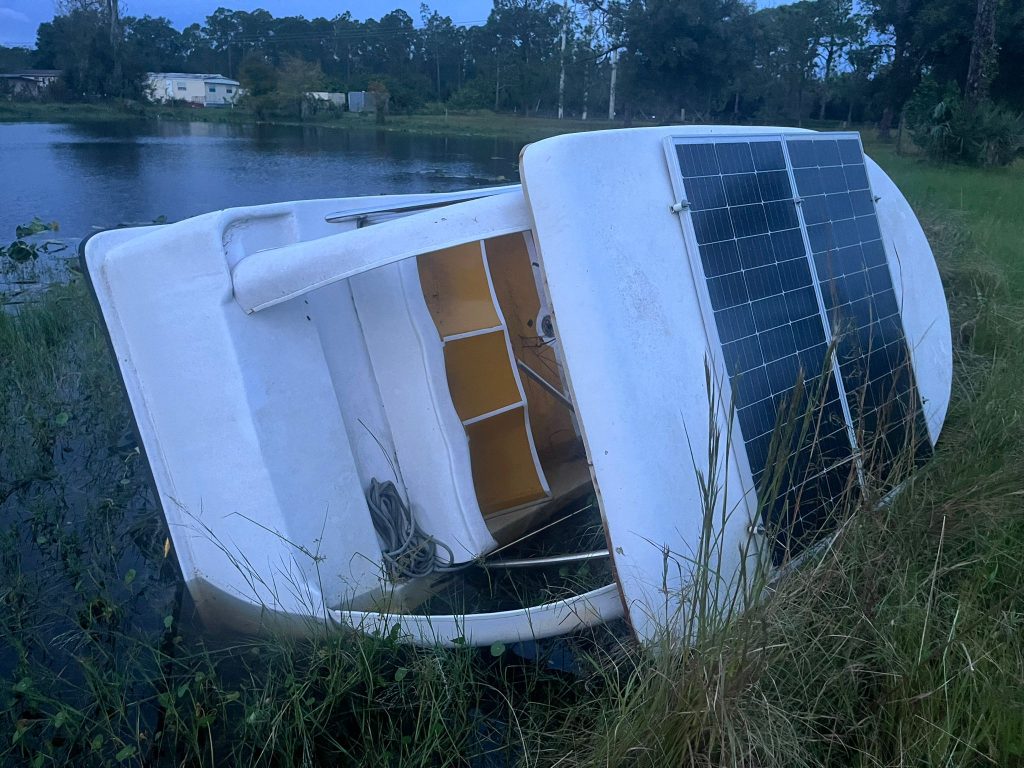
Thankfully, this was just about the one injury my mother and father’ place took. The boat had most likely 100 gallons 380 liters) of water under deck and so my dad couldn’t proper it by himself. It sat that means for round six weeks till my subsequent go to, once we pumped the water out. The hull was nonetheless safe and he or she floated proper again to her former self.
Having survived two years of use and a Class 3 hurricane, it was time to lastly give the previous woman’ a reputation. I requested my subscribers for his or her suggestions and acquired a whole lot of nice concepts (together with dozens of Boaty McBoatface) however lastly selected what I felt was the perfect title of all.
As you learn this, the Sunny Aspect Up nonetheless floats, basking within the battery-charging solar and cruising the native non-public waterways at speeds quick sufficient to get a fist shaken at you in a no-wake zone.
She ain’t the prettiest boat on the market. Nor the quickest. However she’s mine, and he or she’s lovely to me.
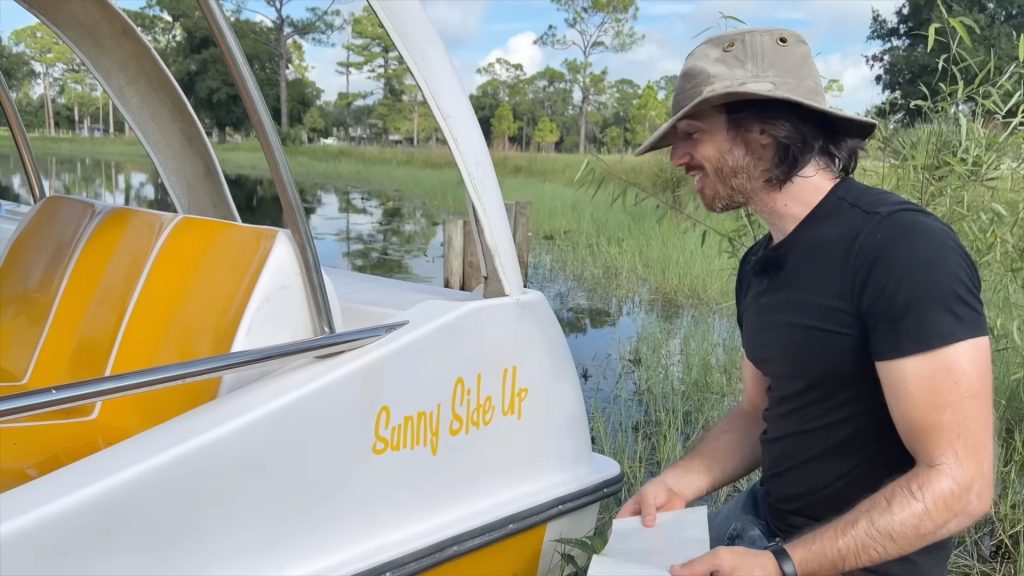
FTC: We use earnings incomes auto affiliate hyperlinks. Extra.


